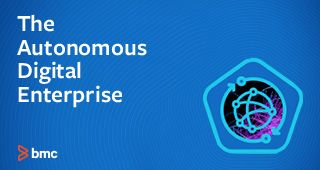As the healthcare industry has pivoted in the face of an aging population and growing technological integration, it can no longer be siloed into individual components. It literally takes a village, or collaborative ecosystem, to deliver end-to-end patient care. And establishing, developing, and maintaining that ecosystem requires an awareness of and adherence to the many considerations of multi-party partnerships that begin and end with patient data. Embracing the opportunities an ecosystem presents also means accepting and preparing for its associated risks.
Defining ecosystem and risk
So, what exactly is a healthcare ecosystem? Think of it in terms of all the touch points involved in providing patient care. Gone are the days of a one-stop shop general practitioner and cash payment. Patients typically have a primary care physician, and then, dependent on their state of health, a care team composed of various specialists. From there, you can factor in everything from prescriptions to diagnostics (technicians, diagnosticians, and labs) to hospitalization (extended care teams and additional diagnostics and labs) to outpatient care (physical therapy, in-home care) to health insurance and billing. And each of those points of contact are handling precious personal data—usually electronically—which means greater opportunities for service disconnects and lapses, as well as breaches and compounded regulatory requirements for handling.
Risk related to healthcare is now an all-encompassing term. NEJM Catalyst discussed healthcare risk management in a 2018 brief as inclusive of “the clinical and administrative systems, processes, and reports employed to detect, monitor, assess, mitigate, and prevent risks.” It’s evolved from its former reference to the much narrower considerations of patient safety and medical errors to include “the expanding role of healthcare technologies, increased cybersecurity concerns, the fast pace of medical science, and the industry’s ever-changing regulatory, legal, political, and reimbursement climate.” It covers a lot, and as such, the healthcare industry has shifted its view of risk from reactive remediation (aftercare, if you will) to proactive prevention.
The American Society for Health Care Risk Management (ASHRM) calls that new world order enterprise risk management (ERM), which uses technology to address comprehensive organizational risk mitigation vs. business unit-specific concerns, and data analytics to make decisions, unite departments, prioritize risks, and allocate resources across eight risk domains:
- Operational
- Clinical/patient safety
- Strategic
- Financial
- Human capital
- Legal/regulatory
- Technology
- Hazard
The role of technology
According to Hal Wolf, president and CEO of Healthcare Information and Management Systems Society, Inc. (HIMSS), a global advisor and thought leader that “supports the transformation of the health ecosystem through information and technology,” digital transformation has been a primary driver toward the ecosystem model. “The advancement in digital capabilities has demonstrated that payers, healthcare providers, vendors, technology solution providers, and patients have become more closely linked than ever before,” he said in December as he was looking toward 2020.
“We see all stakeholders within the health ecosystem working more closely…with patients as essential partners. [It’s] forcing us to look beyond the traditional methods of serving our patients in brick and mortar settings, and instead use innovation and technology to extend care outside the hospital in ways that better fit the needs of the consumer.”
Andy Shin, chief operating officer for the American Hospital Association Center for Health Innovation, reflected in a blog last fall that a successful ecosystem must measure more than the individual contribution of each member and instead look at how each makes the collective organization stronger by working together. “An ecosystem approach requires understanding each individual’s or organization’s role as part of a larger symphony of stakeholders. Then, an ecosystem leader or leaders must convince all stakeholders to play from the same sheet music,” he said.
“Magic occurs when providers, purchasers and payers, the public sector, communities, and entrepreneurs collaborate toward a shared purpose while playing complementary, but independent, roles in improving health. [To] be successful, a health care ecosystem must facilitate shared purpose, vision, and values, while still allowing for individual creativity and innovation to drive transformation.”
The future state of healthcare ecosystems
The Deloitte Center for Health Solutions is already looking ahead—far ahead—to what the data-driven healthcare ecosystem could be in 2040. And they see the evolution happening in three seven-year cycles, starting now with a growing drive to give—and demand for patients to have—access to and ownership of their health information.
In The health plan of tomorrow, a 2019 crowdsourced study that focused on health insurers, researchers suggested that business models would transform quickly “as health plans shift to focus on improving wellness and care using multidimensional data [via] products [that] engage and influence consumers toward better health through a high-touch experience with digital devices.”
The study came away with three distinct future state areas, all built around data.
- Well-being and care delivery that aligns health plans with care delivery teams, including local and virtual options.
- Care enablement that looks beyond the claims process toward developing consumer products.
- Data and platforms that still support traditional compliance and reporting requirements but also use data and digital technologies to reduce care costs, streamline processes, achieve better outcomes, and create new revenue streams from customized offerings.
The study points out that some of the largest health plans are already seeing value in ecosystem modeling, entering “into joint ventures and acquisitions of hospitals, post-acute care providers, physician groups, and behavioral health providers.” They also see future operations and processes based on artificial intelligence, predictive analytics, automation, blockchain, and cloud computing, which will require migrating legacy technology to new and emerging alternatives.
As for the risks of doing business differently to meet an ever-changing market, the researchers advise that ethics and the policies and governance around accountability will need to be continually monitored and updated. If health plans are mindful of the guidance, “they will yield returns [from] better member health and wellness, diversified revenue streams, and improved operational efficiencies.”
In a separate 2018 study, The digital imperative, Deloitte looked at the larger issues of digital transformation in the healthcare sector and advised that an integrated health ecosystem could “break down traditional silos and enable frictionless stakeholder experiences [by] integrating players and connecting data in new ways that empower consumers, building [operational] flexibility…and [embracing] innovation.” At the heart of that, they stress the importance of developing best-in-class capabilities, both in-house and through partner relationships.
A truly unified, collaborative, multi-party ecosystem that safely shares, optimizes, and monetizes patient data and improves patient care could redefine healthcare. To get there, healthcare organizations must also remain mindful of—and vigilant about addressing—the inherent risks and plan for them as they optimize the latest technologies to streamline processes and achieve their goals.
The Autonomous Digital Enterprise
These postings are my own and do not necessarily represent BMC's position, strategies, or opinion.
See an error or have a suggestion? Please let us know by emailing blogs@bmc.com.







